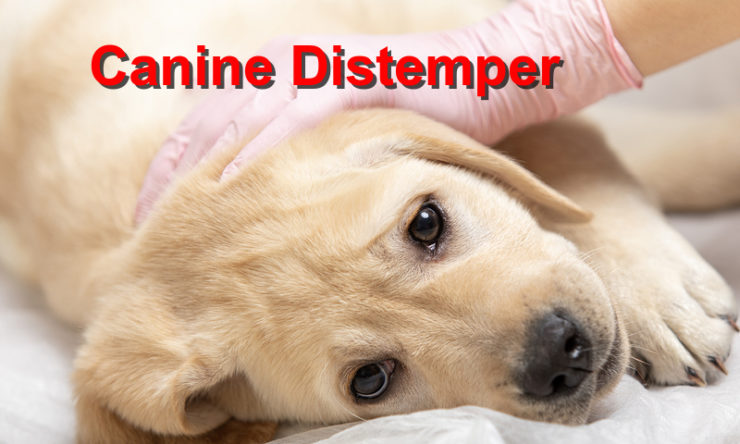Canine Distemper: Recognize the symptoms and getting help
Canine distemper is an infectious viral disease that affects domestic dogs, cats, and a wide variety of wild canine species.
In particular, canine distemper is known to affect the immune, gastrointestinal and respiratory systems of the animal with often fatal consequences.
How do you spot canine distemper symptoms?
At the start of 10-14 days, the most common symptoms to watch out for include:
- Inflammation
Infected cats or dogs develop eyes and noses with watery or pus-like discharge.
- Respiratory conditions
Coughing, and shortness of breath like kennel cough
- Immuno-suppression
The dog or cat will appear lethargic with a loss of appetite present.
- “Hard Pad” disease
If the viral infection matures, dogs can exhibit signs of hardening on the paws and nose.
- Neurological disorders
Secondary bacterial infecting of canine distemper is known to cause severe neurological disorders. In such cases, loss of consciousness, seizures, and paralysis can happen as advanced symptoms.
Is canine distemper preventable?
The virus responsible “paramyxovirus” can end up as a widespread infection among dogs and cats through the following ways
- Direct contact with infected pets or wildlife
- Airborne exposure to contaminated object or animals
- Transmission through pet body fluid such as saliva, feces, urine, and respiratory secretions
Sadly, there is no cure for canine distemper, and the only best option is getting to prevent it. Vaccines are the best bet to counter potential cases of canine distemper in your furry friend.
Besides, you can also opt for the following preventable measures.
- Avoid missing any of the immunizations scheduled for canine distemper or other viral diseases
- Increase the immunization check for your pets, especially young puppies under six months since they are at most risk.
- Control your pet’s movement and contact with wildlife
- Ensure you check on your dogs socializing rate at parks to prevent contact with infected dogs
- Pet owners with ferrets or other types of pet canines should get USDA-approved vaccines to prevent canine distemper
Can a dog recover from canine distemper?
With the right diagnosis, veterinarians can identify clinical signs of canine distemper and approve lab testing of antibodies. While there is no cure, such early diagnosis and treatment consisting of supportive care can save your dog.
Unfortunately, dogs, once infected with canine distemper, can never fully recover. Neurological conditions such as mental and motor deterioration can be lasting signs throughout your pet’s lifespan.
Reference: Merckvetmanual, AKC, ncbi.nlm.nih.gov, cwhl.vet.cornell.edu, aphis.usda.gov, ncbi.nlm.nih.gov
Copyright: Local Value


